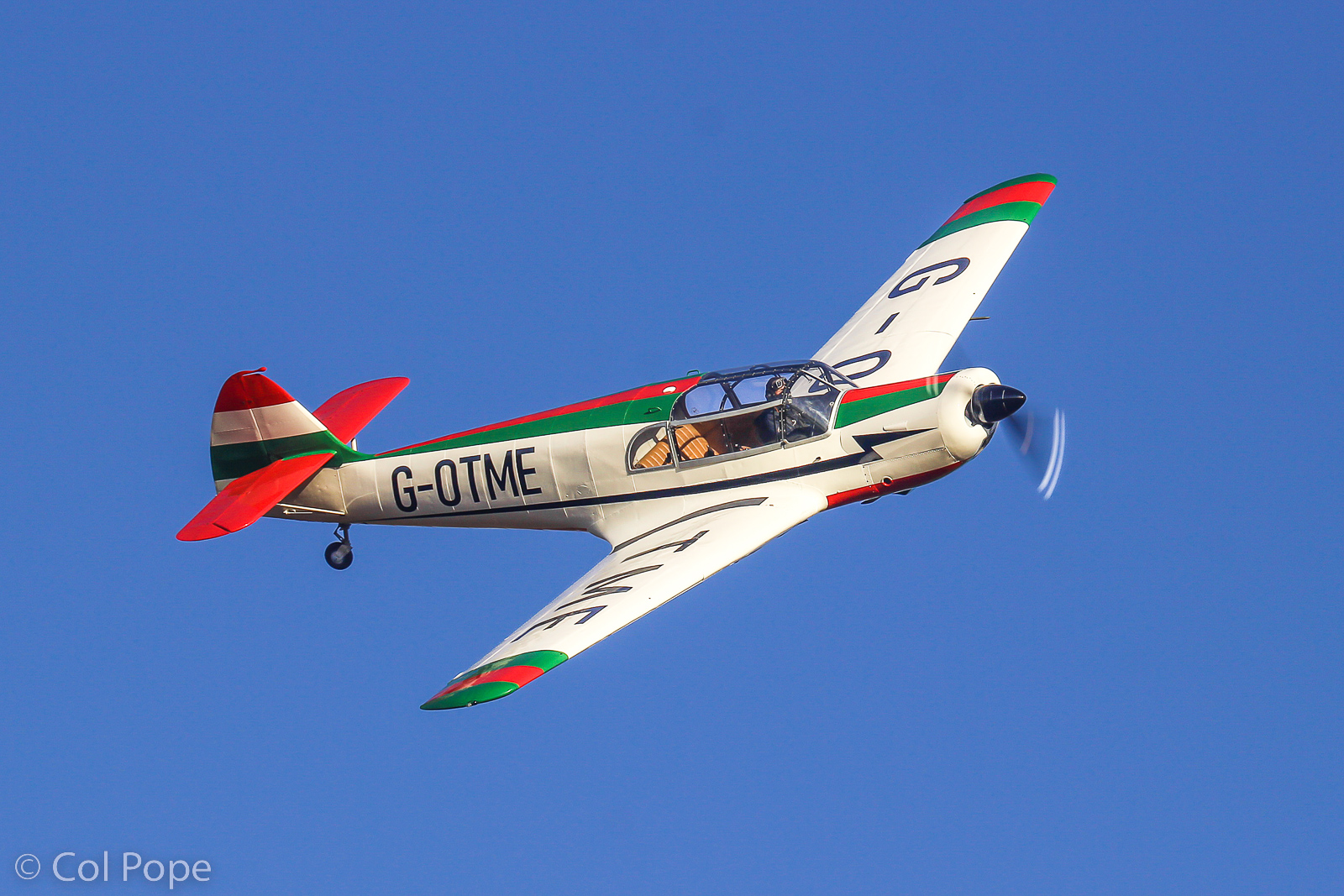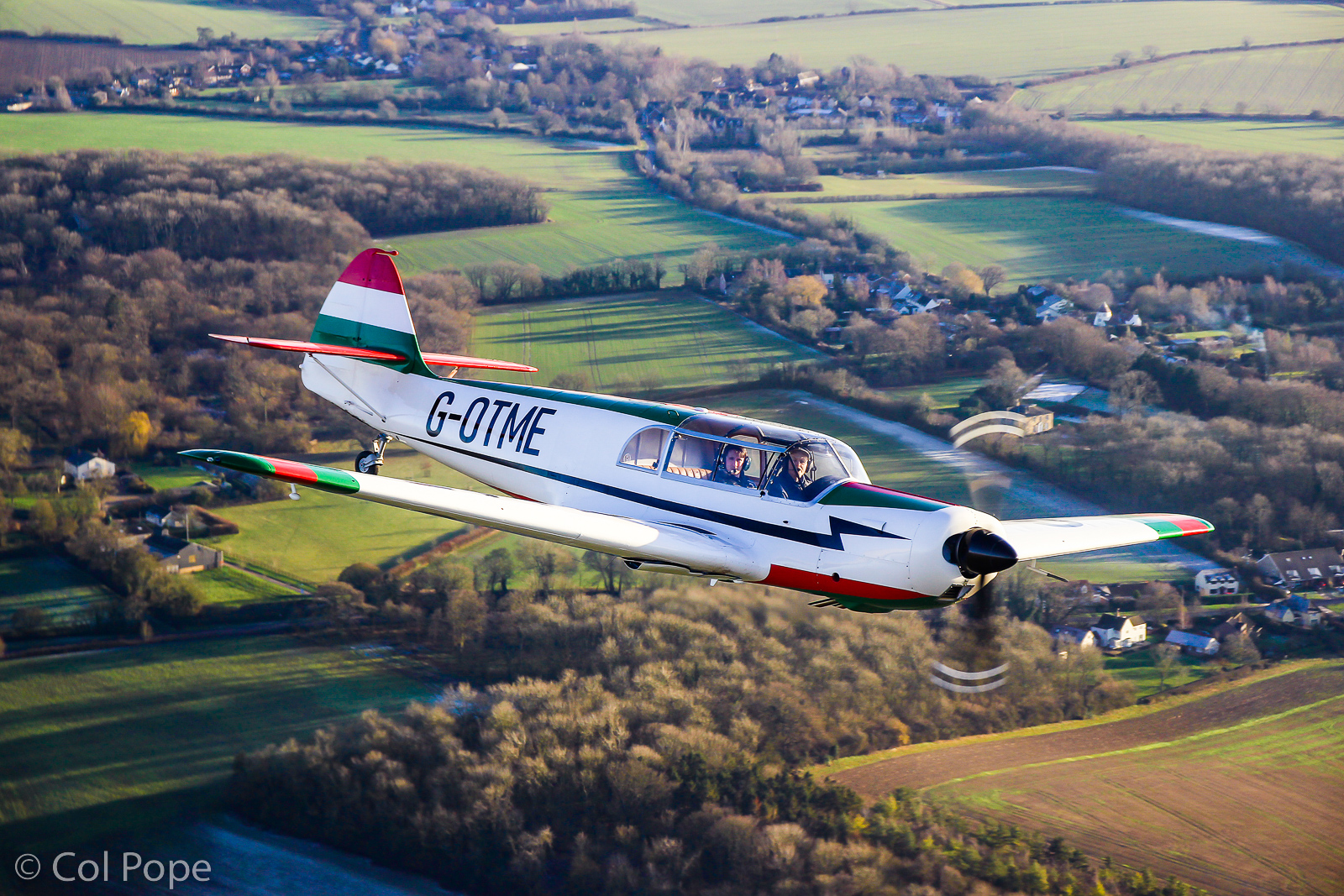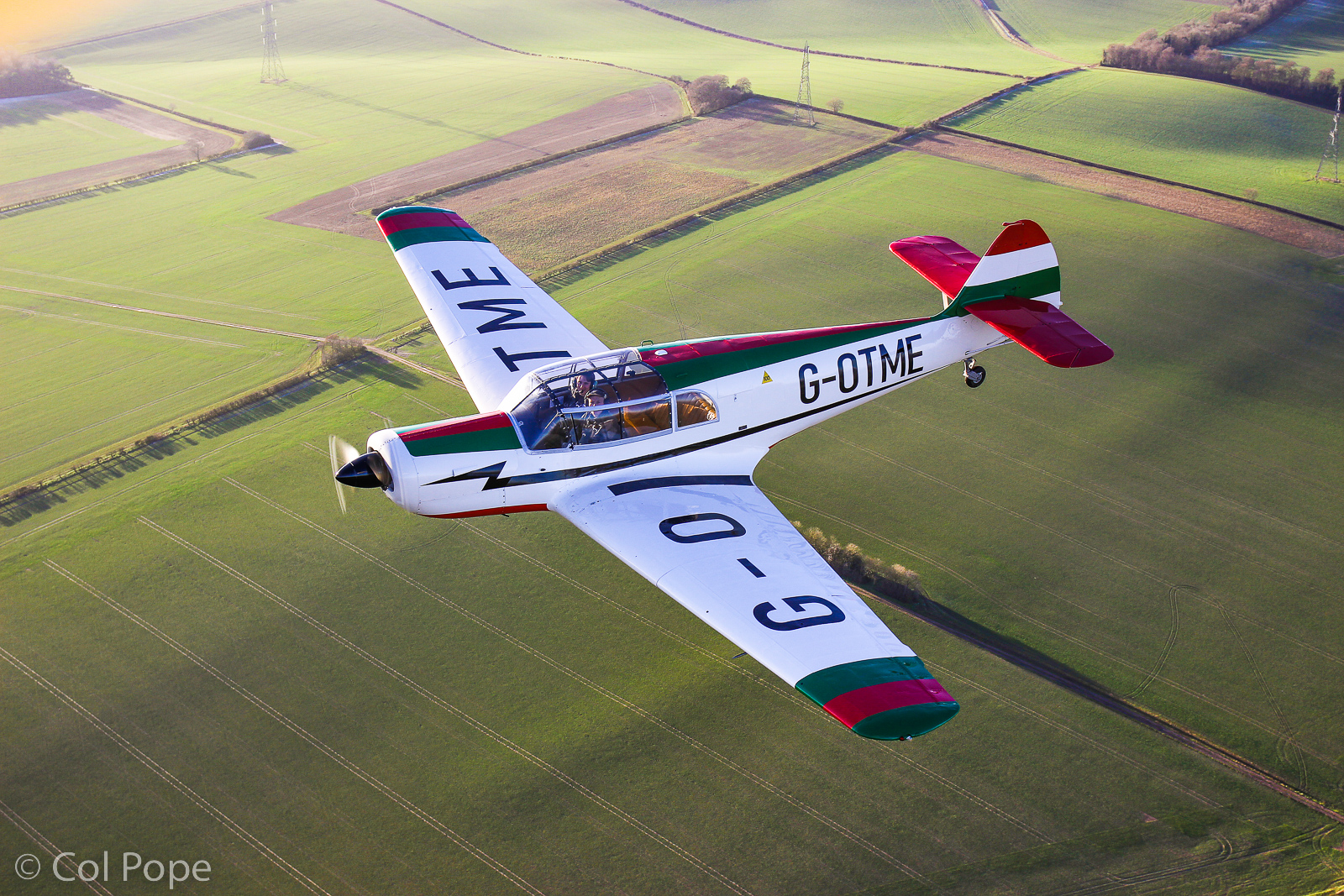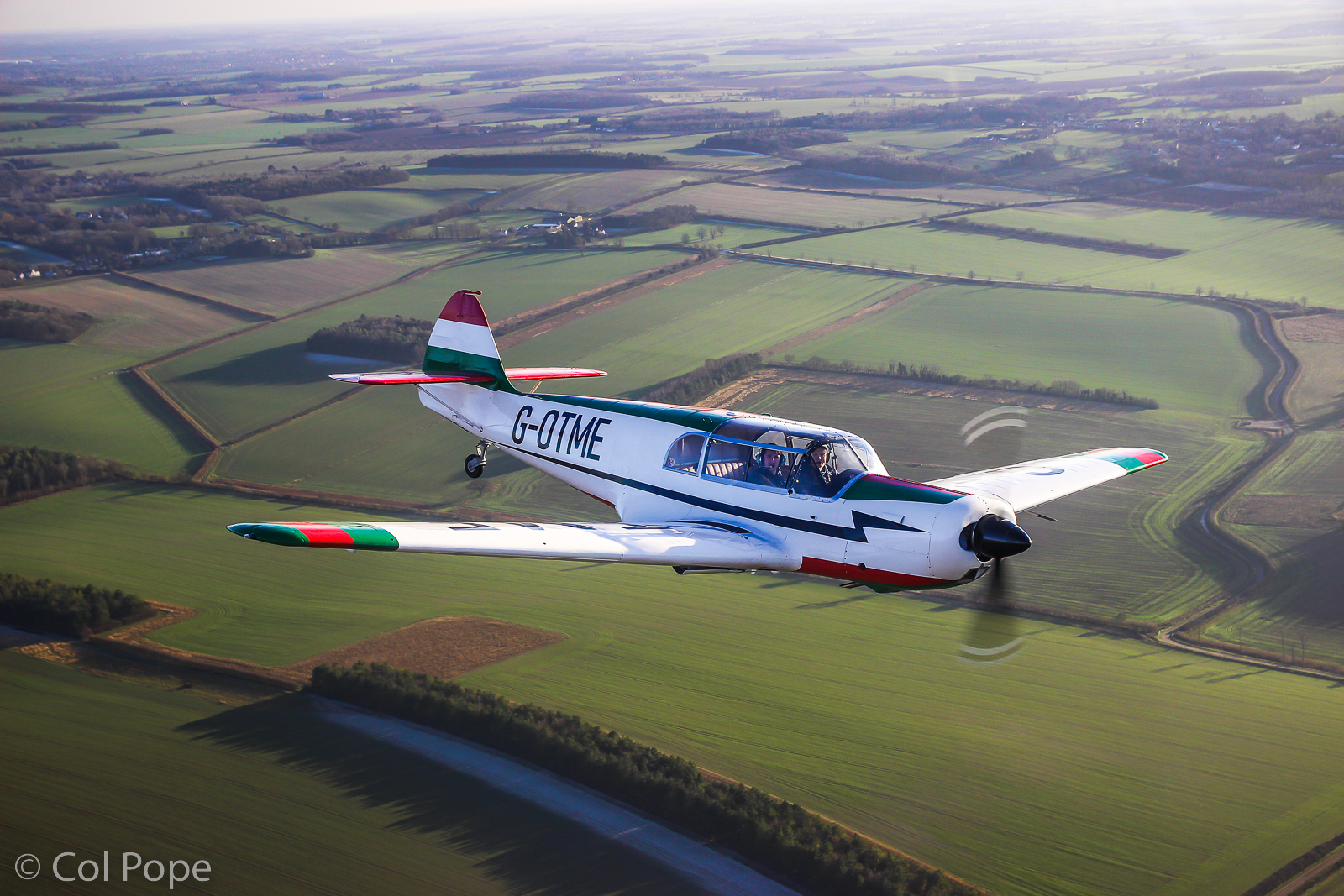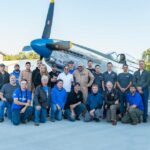Restored Nord Pingouin makes first flight in 62 years
by Col Pope
Nord 1002 Pingouin II G-OTME has made its first post-restoration flight following a comprehensive restoration by Vintage Fabrics at Audley End, in Essex, UK. Well-known warbird display pilot, Clive Denney, was at the controls for this flight on Thursday January 19th, 2023, the aircraft’s first trip aloft since October, 1960. Denney has previous experience with the type, which derives from the Messerschmitt Bf 108, having also flown other UK-based examples, G-ATBG and G-ETME.
The Société Nationale de Constructions Aéronautiques du Nord (SNCAN), more commonly known as Nord, built this Pingouin as serial number 197 at their factory in Les Mureaux, near Paris, France during 1945. The liaison aircraft’s early history remains vague, but on June 8th, 1946 the French Secretary General of Civil Aviation registered it as F-BAUL for use as a communications aircraft, a role it served in until struck off charge in October 1960. Sold into private ownership, the Pingouin became a gate guard outside a Shell petrol station near Barreme for the next decade or so.
Sometime in the 1970s, Raymond Jones acquired the Pingouin from the Shell station’s owners. Jones’ son-in-law, Michael Dutter, exported the hulk to the USA, via Nice, in July 1980. Settling in Stuart, Florida in September that year, Jones sold the aircraft to Richard Rooney on December 20th, 1980. Although the Pingouin was missing many parts, Rooney began the process of restoring it to flying condition and placed the aircraft on the U.S. civil registry as N108E in 1994.
For simplicity of operations in the USA, Rooney chose to replace the French engine with an American unit, opting for a fuel-injected Lycoming TIO-540. This, of course, required the design, manufacture and installation of a wholly new engine bearer and complement of cowlings. Rooney also ditched the original two-bladed propeller for a three-bladed, variable pitch Hartzell unit. Other alterations included the provision of additional fuel and oil tank capacity (carried out to the manufacturer’s own design modifications), a new instrumentation suite, and the installation of more effective Cleveland wheels and brakes. The cockpit glazing, damaged during the aircraft’s days as a gate guard, also needed replacing. Furthermore, all of the flying controls underwent recovering with new fabric. In late 1996, the Pingouin received a cosmetic transformation, repainted with a sand brown desert scheme to more closely resemble a Luftwaffe Messerschmitt Bf 108 serving in the North Africa Campaign. The American rebuild team progressed to the point of performing some engine runs and a taxi test in the Pingouin, but the project stalled soon after for some reason.
Following the death of its owner, Rooney’s estate sold N108E to a British-based operator named Simon O’Connell in September 2014. O’Connell had the Nord registered as G-OTME and shipped to England. Soon after its arrival, the aircraft went into storage in Berkshire, undergoing initial inspection with Adam Lewis. Later, at Southend Airport, Paul Baisden built a new engine frame and cowlings for the Pingouin. Interestingly, the aircraft relocated temporarily to both Bentwaters and White Waltham for use as a movie set prop in the first season of the WWII television drama series, SAS: Rogue Heroes, which aired in 2022. Following the film shoot, the Pingouin moved to Vintage Fabrics in October 2021, where project engineer Owen Mansfield (with assistance from his father Steve) worked to complete the aircraft’s restoration. However, this effort incurred further interruption to accommodate a major film production, again on set at White Waltham, where the Nord taxied for a scene in front of the cameras. Towards this end, the restoration crew made some of the aircraft’s systems operable. Andrew Denney also repainted the aircraft with a striking new livery representing a fictional Italian civilian flying school for the film shoot.
Once filming was finally complete, the aircraft returned to Audley End for a thorough overhaul of its systems and a detailed airframe inspection. The restoration team also went through the airframe to replace a variety of American-substituted parts with those original to the design or alternatives more acceptable for UK certification. They also fitted the Pingouin with a two bladed propeller to match the owner’s other Nord 1002, and retuned the aircraft’s Lycoming O-540 engine, a carbureted, non-turbocharged substitute for the previously installed TIO-540.
After a series of engine runs and the submission of the necessary certification paperwork, good weather finally arrived at Audley End. The first flight lasted 27 minutes and revealed no significant problems, which enabled further flight testing to proceed. Still wearing its film production livery, the aircraft presents a colourful contrast to its owner’s additional, more sombrely adorned Nord 1002, G-ETME. This brace of Pingouins will make an interesting pairing in the skies should they subsequently fly together!
Many thanks indeed to Col Pope for this article and for his marvelous images which accompany it!







